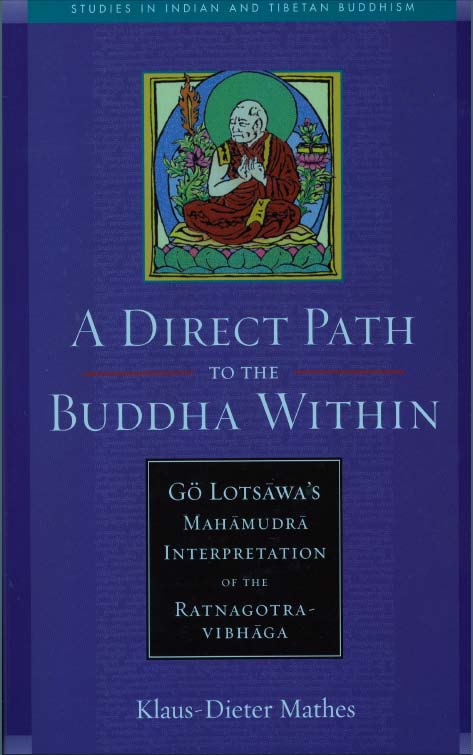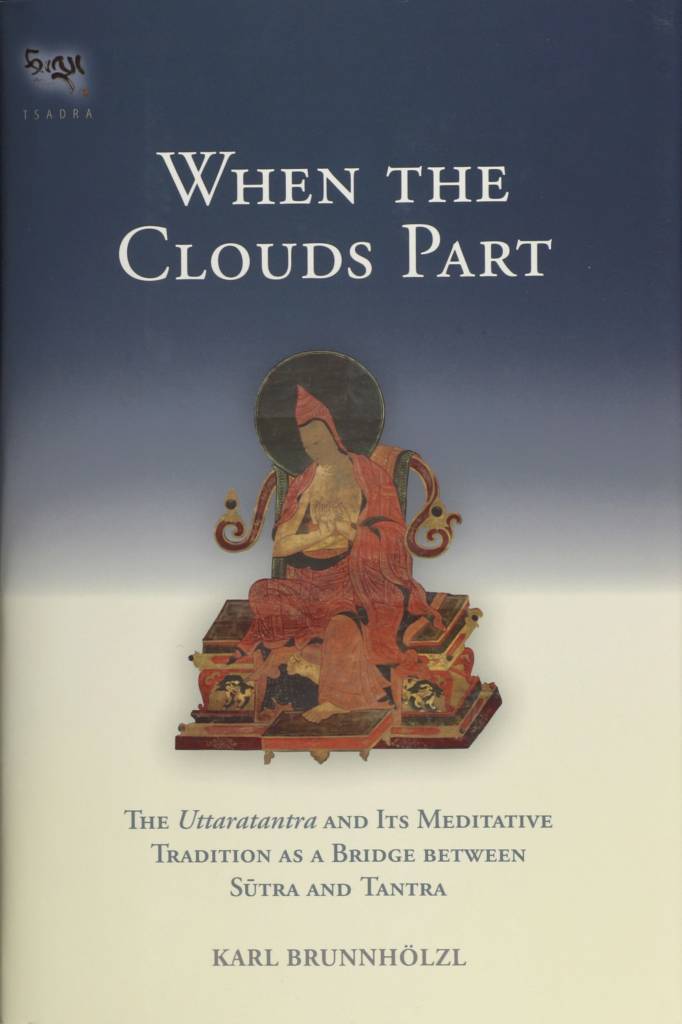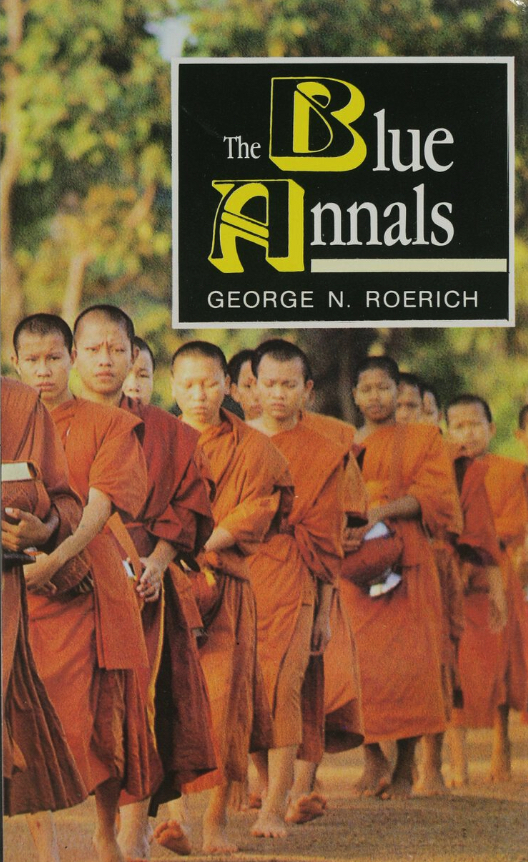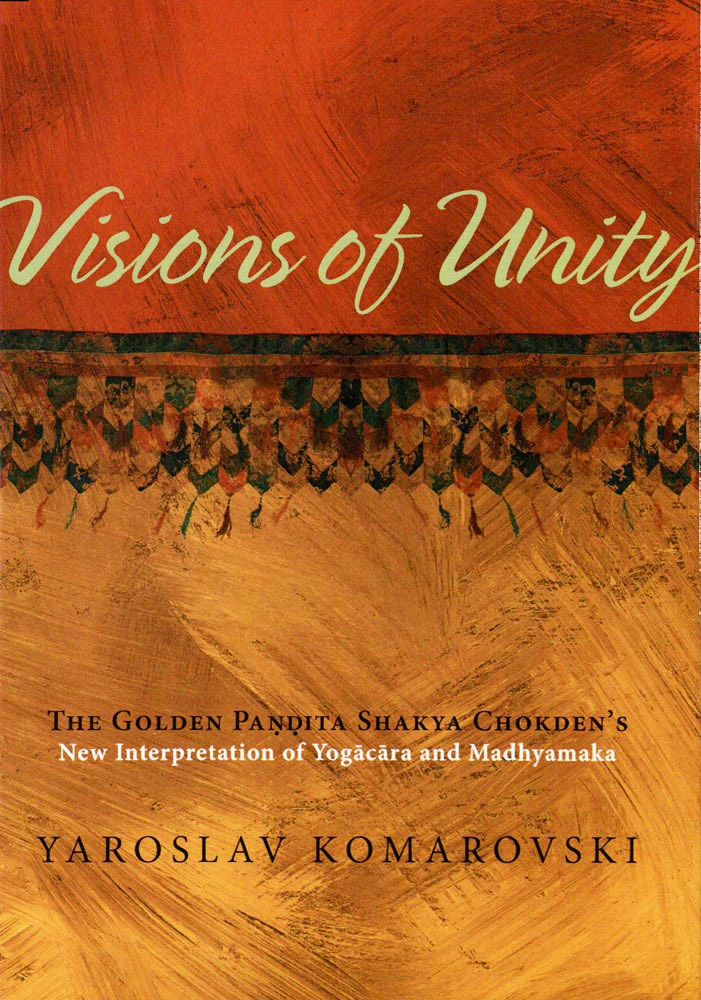The Traditions of Ngok and Tsen
Watch & Learn
From the Masters
Ngok Lotsāwa Loden Sherab
In his Epistle: a Drop of Nectar, Ngok Lotsāwa writes the following verse utilizing similes to depict a model of the path:
- །བཤེས་གཉེན་སྤྲིན་ལས་ལེགས་བྱུང་མང་དུ་ཐོས་པ་ཡི།
།ཆར་རྒྱུན་བསིལ་བས་ཉོན་མོངས་གདུང་བ་ཞི་བྱེད་ཀྱིས།
།བདེ་གཤེགས་སྙིང་པོའི་ས་བོན་རབ་ཏུ་བརླན་བྱས་ནས།
།སངས་རྒྱས་ཡོན་ཏན་ཕུན་ཚོགས་ལོ་ཏོག་རབ་རྒྱས་བྱ༎- After allaying the "heat" of defilements, with the "cool rainwater" of repeated study, carried by the "clouds" of good teachers; and after moistening the "seeds" of Buddha-nature (bde gshegs snying po), you should cultivate "crops" of perfect Buddha-qualities.
~ rngog lo tsA ba blo ldan shes rab. springs yig bdud rtsi’i thig le. In rngog lo tsA ba blo ldan shes rab kyi gsung chos skor. Beijing: Krung go'i bod rig pa dpe skrun khang, 2009: p. 659.
-Translation from Kano, Kazuo. Buddha-Nature and Emptiness: rNgog Blo-ldan-shes-rab and A Transmission of the Ratnagotravibhāga from India to Tibet. Wiener Studien zur Tibetologie und Buddhismuskunde 91. Vienna: Arbeitskreis für Tibetische und Buddhistische Studien Universität Wien, 2016: p. 232.
In the opening of his Condensed Meaning of the Mahāyāna Uttaratantra, Ngok states that the Ratnagotravibhāga is a treatise which explicates the sūtras of definitive meaning that belong to the third turning of the Dharma Wheel, and supports the doctrine of the single vehicle :
- །བཅོམ་ལྡན་འདས་བྱམས་པས་བདེ་བར་གཤེགས་པའི་བཀའི་དགོངས་པ་ཕྱིན་ཅི་མ་ལོག་པར་གསལ་བར་མཛད་པ་ན། ངེས་པའི་དོན་གྱི་མདོ་སྡེ་རིན་པོ་ཆེ་ཕྱིར་མི་ལྡོག་པའི་ཆོས་ཀྱི་འཁོར་ལོ། ཆོས་ཀྱི་དབྱིངས་ཚུལ་གཅིག་ཏུ་སྟོན་པ། ཤིན་ཏུ་རྣམ་པར་དག་པ་གདོན་མི་ཟ་བའི་ཆོས་ཀྱི་རྣམ་གྲངས་ཐམས་ཅད་ཀྱི་དོན་རབ་ཏུ་སྟོན་པ། ཐེག་པ་ཆེན་པོ་རྒྱུད་བླ་མའི་བསྟན་བཅོས་འདི་མཛད་པས། ཐེག་པ་ཆེན་པོའི་དོན་གྱི་དེ་ཁོ་ན་རྣམ་པར་གཞག་པ་ཡིན་ནོ།
- When the Illustrious Maitreya clarified in an unmistaken way the intention of the discourses of sugata, he presented the true meaning of Mahāyāna by composing the treatise of the Mahāyānottaratantra, which teaches the precious sūtras of definitive meaning, namely the irreversible wheel of Dharma, the dharmadhātu in a single mode; and which precisely declares the meaning of all religious discourses (dharmaparyāya) which are very pure and certain
~ rngog lo tsA ba blo ldan shes rab. Theg pa chen po rgyud bla ma'i bsdus don. In rngog lo tsA ba blo ldan shes rab kyi gsung chos skor. Beijing: Krung go'i bod rig pa dpe skrun khang, 2009: p. 547.
-Translation from Kano, Kazuo. "rNgog Blo‐ldan‐shes‐rab's Summary of the Ratnagotravibhāga: The First Tibetan Commentary on a Crucial Source for the Buddha‐nature Doctrine." PhD diss., University of Hamburg, 2006: p. 369.
In the same text, Ngok explains why the element, i.e. buddha-nature, should be understood in terms of a non-implicative negation:
- །དེས་ན་མེད་པར་དགག་པའི་ཐ་སྙད་ཀྱི་ཡུལ་དུ་གྱུར་པའི་ཁམས་ནི་མེད་པར་དགག་པའི་ཐ་སྙད་ཀྱི་ཡུལ་དུ་གྱུར་པའི་ཉེར་ལེན་དུ་བརྗོད་ཀྱི་སྐྱེས་བུ་བྱེད་པའི་དོན་ཉིད་ནི་དངོས་སུ་ཡོད་པ་མ་ཡིན་ནོ། །ཐ་སྙད་ཀྱི་ཡུལ་ཞེས་བྱ་བ་ནི།་མེད་པར་དགག་པ་རང་བཞིན་དུ་གྲུབ་པ་དེ་ཁོ་ནར་མེད་པའི་དོན་ཏོ།
- Therefore, the dhātu which is the conventional object (yul) of a non-affirming negation (prasajyapratiṣedha) is called the efficient cause (upādāna), which is the conventional object of the non-affirming negation. It is, however, not the case that an object (don) of a human activity (puruṣakāra) [such as the conventional object] exists actually. The term “conventional object” means something which is established as having a nature of the non-affirmative negation, [namely] what does not exist in reality.
~ rngog lo tsA ba blo ldan shes rab. Theg pa chen po rgyud bla ma'i bsdus don. In rngog lo tsA ba blo ldan shes rab kyi gsung chos skor. Beijing: Krung go'i bod rig pa dpe skrun khang, 2009: p. 547.
-Translation from Kano, Kazuo. "rNgog Blo‐ldan‐shes‐rab's Summary of the Ratnagotravibhāga: The First Tibetan Commentary on a Crucial Source for the Buddha‐nature Doctrine." PhD diss., University of Hamburg, 2006: p. 375.
Furthermore, Ngok explains how the three reasons stated in the crucial Verse I.28 of the Ratnagotravibhāga are emblematic of the resultant, intrinsic and causal aspects of buddha-nature:
- རྫོགས་སངས་སྐུ་ནི་འཕྲོ་ཕྱིར་དང་། ཞེས་བྱ་བ་ལ་སོགས་པ་ལ། འབྲས་བུ་དང། རང་བཞིན་དང་། རྒྱུའི་སྙིང་པོ་ཅན་ཡིན་པའི་ཕྱིར། དེ་བཞིན་གཤེགས་པའི་སཉང་པོ་ཅན་དུ་དགོངས་པའོ༎
དེ་ལ་རྣམ་པར་དག་པའི་དེ་བཞིན་ཉིད་རྫོགས་པའི་སངས་རྒྱས་ཀྱི་སྐུ་ཡིན་ལ། དེ་འཕྲོ་བ་ནི་དེས་ཁྱབ་པ་སྟེ། སེམས་ཅན་ཐམས་ཅད་ཀྱིས་ཐོབ་ཏུ་རུང་བའི་ཕྱིར་ཁྱབ་པ་ཡིན་ནོ། ཕྱོགས་འདི་ལ་ནི་དེ་བཞིན་གཤེགས་པ་ནི་དངོས་པོ་ཡིན་ལ། སེམས་ཅན་འདིའི་སྙིང་པོ་ཅན་དུ་ནི་བཏགས་པ་ཡིན་ཏེ། དེ་ཐོབ་པའི་སྐལ་བ་ཡོད་པ་ལ་དེས་ཁྱབ་པར་བཏགས་པའི་ཕྱིར་རོ༎
དེ་བཞིན་ཉིད་དབྱེར་མེད་ཕྱིར་དང་༑་ཞེས་བྱ་བ་ནི། དེ་བཞིན་གཤེགས་པ་དང་། སེམས་ཅན་དེའི་སྙིང་པོ་ཅན་གཉིས་ཀ་དངོས་སུ་ཡིན་ཏེ། དེ་བཞིན་ཉིད་དྲི་མ་རང་བཞིན་གྱིས་དབེན་པ་ནི་གློ་བུར་གྱི་སྒྲིབ་པ་དང་བཅས་པའི་ཚེ་ཡང་སངས་རྒྱས་ཀྱི་རང་བཞིན་ཡིན་པ་དང་། སེམས་ཅན་གྱི་རྒྱུད་ལ་ངེས་པར་གནས་པའི་ཕྱིར་རོ༎
རིགས་ཡོད་ཕྱིར་ན། ཞེས་བྱ་བ་ན། དེ་བཞིན་ཉིད་རྣམ་པར་དག་པའི་གནས་སྐབས་ཐོབ་པའི་རྒྱུ་དགེ་བའི་བག་ཆགས་ཤེས་རབ་དང་སྙིང་རྗེའི་ས་བོན་ནི་དེ་བཞིན་གཤེགས་པའི་རྒྱུ་ཡིན་པས་དེ་བཞིན་གཤེགས་པ་ཞེས་བཏགས་པ་ཡིན་ལ། སེམས་ཅན་གྱི་སྙིང་པོ་ནི་དངོས་པོ་ཁོ་ན་ཡིན་ནོ༎- As for [verse I.28] “Because the body of the Perfect Buddha spreads/pervades [everywhere, because the tathatā cannot be differentiated, and because the gotra exists, the Buddha taught that all sentient beings always have the Buddha nature],” the following is intended: since [all sentient beings] have essence (snying po) of (a) result, (b) nature, and (c) cause, [they] have the Buddha nature.
Of them, the pure tathatā is [referred to by] the “body of the Perfect Buddha (i.e. the dharmakāya).” Spreading means pervading. Because [such body] is attainable (thob tu rung) by all sentient beings, it [is said] to pervade [them]. In this respect, the tathāgata['s possession of the resultant dharmakāya] is actual (dngos po). On the other hand, one nominally designates sentient beings as those who have its essence, because one designates the existence of a fortune (skal ba) for attaining it (i.e. the resultant dharmakāya) as [the expression that] it pervades [all sentient beings].
[The second reason] “because the tathatā cannot be differentiated” [should be took] to be actual (dngos su yin) for both the tathāgata and sentient beings who possess his essence (i.e. the Buddha nature). This is because even when the tathatā which is naturally isolated from stains is accompanied by adventitious stains, it is the intrinsic nature of the Buddha and certainly abides in the continuum of sentient beings.
As for [the third reason] “because the gotra exists,” since a cause for attaining the tathatā at the [resultant] pure state, namely the wholesome impression which is the seed of the [resultant] discriminative insight and the compassion, is the cause of the tathāgata, one designates [such cause] as the tathāgata [merely] nominally, whereas [one calls it] the “essence of sentient beings” (sems can gyi snying po) in precisely actual [sense].~ rngog lo tsA ba blo ldan shes rab. Theg pa chen po rgyud bla ma'i bsdus don. In rngog lo tsA ba blo ldan shes rab kyi gsung chos skor. Beijing: Krung go'i bod rig pa dpe skrun khang, 2009: p. 580.
-Translation from Kano, Kazuo. "rNgog Blo‐ldan‐shes‐rab's Summary of the Ratnagotravibhāga: The First Tibetan Commentary on a Crucial Source for the Buddha‐nature Doctrine." PhD diss., University of Hamburg, 2006: pp. 444-445.
Tsen Khawoche
In the only surviving literary work attributed to Tsen Khawoche, entitled Instructions on the View of Other-Emptiness, which is preserved among the 108 Profound Instructions of the Jonang, he gives the following practical instructions on the three natures:
ངོ་བོ་ཉིད་མེད་གསུམ་དུ་བཞག་ཀྱང་། དཔྱད་ན། སེམས་ལས་མ་གཏོགས་པའི་གཟུང་འཛིན་མེད་པའི་ཕྱིར་ཆོས་ཅན་གཞན་དབང་དང་། ཆོས་ཉིད་ཡོངས་གྲུབ་ཁོ་ན་དྲི་མ་དང་བྲལ་ཞིང་ལྷུན་གྱིས་གྲུབ་པའི་ཆོས་ཉིད་གཅིག་པུ།
Although classified as three natures without an inherent essence, if you analyze — since there are no fixations and nothing to fixate upon besides the mind, only the phenomenal quality of the relational nature and the phenomenal actuality of the perfected nature are free from defilements. They are the identical ultimate actuality of phenomena which is spontaneous presence.~ Btsan kha bo che. Gzhan stong lta khrid. In Zab khrid brgya dang brgyad kyi yi ge. Edited by Kun dga' grol mchog. Gdams ngag mdzod. New Delhi: Shechen Publications, 1999: Vol. 18, p. 171.
~ Translation from Tsen Kawoche. "Elucidating the Zhentong View: A Condensation of the Threefold Nature of Reality." Translated by Michael Sheehy. Jonang Foundation’s Digital Library, n.d.
Gö Lotsāwa Zhönu Pal
Gö Lotsāwa on the origins of the Tibetan exegesis of the Ratnagotravibhāga:
- With regard to the [Maitreya works], three among the works of the Illustrious Maitreya, [namely] the Abhisamayālaṁkāra, the Mahāyānasūtrālaṁkāra, and the Madhyāntavibhāga, were translated by the translators Paltseg (Dpal brtsegs), Yeshé Dé (Ye shes sde), and others during the first period of the spread of the doctrine [in Tibet]. As for the [remaining] two, the [Ratnagotravibhāga Mahāyāna-]Uttaratantra[śāstra] and the Dharmadharmatāvibhāga together with its commentary, Lord Maitrīpa saw light shining from a crack in a stūpa and, wondering what the source of the light was, tried to determine it. As a consequence, he obtained the texts of the two treatises. He rejoiced [in them] and prayed to the venerable [Maitreya], whereupon he arrived—directly visible in an opening between clouds—and duly bestowed [on Maitrīpa] the "oral transmission" (lung) [of both texts]. Thus it is known.
- Then he who is called Paṇḍita Ānandakīrti heard [the teaching of both texts] from Lord Maitrīpa and carried the texts to Kashmir disguised as a beggar. Upon his arrival, the great paṇḍita Sajjana recognized him as a scholar and invited him to his home. [Sajjana] listened to [the teaching of] both treatises and copied the texts. The great translator Loden Sherab heard them [from Sajjana], translated them in Śrīnagar in Kashmir, and composed an extensive explanation in Tibet.
- Also, the [well-] known Tsen Kawoché, a disciple of Drapa Ngönshé, came with the great translator (i.e., Ngog Loden Sherab) to Kashmir. He requested Sajjana to bestow on him [the Maitreya works] along with special instructions, since he wanted to make the works of the Illustrious Maitreya his "practice [of preparing] for death" ('chi chos). Thereupon [Sajjana] taught all five works, with Lotsāwa Zu Gawa Dorjé serving as translator. He also gave special instructions with regard to the Uttaratantra in the due way, and back in Tibet, Tsen explained it to numerous [spiritual friends] in Ü and Tsang. The translator Zu Gawa Dorjé wrote a commentary on the Uttaratantra in accordance with the teaching of Sajjana, and translated the [Dharma]dharmatāvibhāga, both root-text and commentary. Thus neither the Uttara[tantra] nor the [Dharma]dharmatāvibhāga was spread in India before the time of Lord Maitrīpa. Neither is found in the great treatises such as the Abhisamayālaṁkārāloka, not even "a single phrase of them" (zur tsam).
~ Klaus-Dieter Mathes. A Direct Path to the Buddha Within: Go Lotsāwa's Mahāmudrā Interpretation of the Ratnagotravibhāga. Studies in Indian and Tibetan Buddhism. Boston:Wisdom Publications, 2008: pp. 161-163.
Śākya Chokden
In his Essence of Sūtra and Tantra: an Explanation of Buddhagarbha, Śākya Chokden implicitly describes the stance of the meditative tradition in relation to the Third Turning of the Dharma-wheel:
- འཁོར་ལོ་ཐ་མ་ཡིས། བདེ་གཤེགས་སྙིང་པོའི་དགོངས་གཞི་ནི། སྤྲོས་པའི་མཐའ་ཀུན་དང་བྲལ་བའི། རང་བཞིན་འོད་གསལ་ཅེས་བྱ་བ། སོ་སོ་རང་གིས་རིག་པ་ཡི། ཡེ་ཤེས་ཀྱི་ནི་མྱོང་བྱ་ལ། གསལ་བར་བཤད་པ་ཉིད་ཡིན་ཕྱིར། མ་ཡིན་དགག་པར་འཆད་དགོས་སོ།
- According to the final turning, the underlying intent of *sugatagarbha is the so-called natural luminosity that is free from all extremes of elaborations. Because it is that which is clearly explained as the object of experience of wisdom that is personally realized, it is necessary to characterize it as an affirming negation.
~ shAkya mchog ldan. Sangs rgyas kyi snying po'i rnam bshad mdo rgyud snying po. In gser mdog paN chen shAkya mchog ldan gyi gsung 'bum. rdzong sar: rdzong sar khams bye'i slob gling thub bstan dar rgyas gling, 2006-2007: Vol. 13, p. 161.
-David Higgins and Martina Draszczyk. Mahāmudrā and the Middle Way: Post-Classical Kagyü Discourses on Mind, Emptiness and Buddha-Nature. Volume 1: Translations, Critical Texts, Bibliography and Index. Wiener Studien zur Tibetologie und Buddhismuskunde 90. Vienna: Arbeitskreis für Tibetische und Buddhistische Studien Universität Wien, 2016: p. 83, nt. 203.
Jamgön Kongtrul
In his commentary on the Ratnagotravibhāga, the Unassailable Lion's Roar, Jamgön Kongtrul echoes Gö Lotsāwa stating:
- གྲྭ་པ་མངོན་ཤེས་ཀྱི་མཁན་བུ་བཙན་ཁ་བོ་ཆེ་ཞེས་གྲགས་པའང་ལོ་ཙཱ་ཆེན་པོ་དང་ལྷན་ཅིག་ཁ་ཆེར་བྱོན། སཛྫ་ན་ལ་ཁོ་བོས་བཅོམ་ལྡན་འདས་བྱམས་པའི་ཆོས་རྣམས་ལ་འཆི་ཆོས་བགྱིད་པ་ལགས་པས་གདམས་པ་བཅས་ཏེ་ཐུགས་ལ་གདགས་པར་ཞུས་པས་གཟུས་དགའ་བའི་རྡོ་རྗེས་ལོ་ཙཱ་བ་བྱས་ནས་བྱམས་ཆོས་ལྔ་པ་ཐམས་ཅད་གསུངས། རྒྱུད་བླ་མ་ལ་གདམས་པའང་ལེགས་པར་གནང་བས་བཙན་དྲི་མེད་ཤེས་རབ་ཀྱིས་བོད་དུ་བྱོན་ཏེ་དབུས་གཙང་རྣམས་སུ་བཤད་པ་མཛད། གཟུས་དགའ་བའི་རྡོ་རྗེས་རྒྱུད་བླ་མ་ལ་སཛྫ་ནའི་གསུང་དང་མཐུན་པར་རྒྱན་ཊཱིཀ་མཛད་ཅིང་ཆོས་ཉིད་རྣམ་འབྱེད་རྩ་འགྲེལ་ཡང་བསྒྱུར། འདི་ལ་བྱམས་ཆོས་སྒོམ་ལུགས་པའང་གྲགས་ཤིང་ཐུན་མོང་མ་ཡིན་པའི་བཤད་པ་དང་ཉམས་ལེན་གྱི་རྒྱུན་ཁྱད་པར་འཕགས་པ་ཡིན་ལ།
- Drapa Ngönshe's disciple, widely known as Tsen Khawoche, having gone to Kashmir with the great translator [Ngok], made a request to Sajjana asking him, "Please take me under your guidance and grant me instructions so that I may make the Dharma teachings of the Transcendant Conqueror Maitreya my practice [to prepare] for death." And so, with Zu Gawai Dorje acting as the translator, [Sajjana] taught him all of the Five Dharma Teachings of Maitreya. Since he gave him very thorough instructions on the Uttaratantra, having arrived back in Tibet, Tsen Drime Sherab gave explanations [of this text] to those [people living] in U and Tsang. Zu Gawai Dorje composed a supplemental commentary to the Uttaratantra in accordance with the teachings of Sajjana and also translated the root text and commentary of the [Dharma]dharmatāvibhāga. This is what is widely-renowned as the Meditative Tradition of the Dharma Teachings of Maitreya, and is a remarkably distinguished line of extraordinary explanatory teachings and [instructions for] practice.
~ 'Jam mgon kong sprul. Theg pa chen po rgyud bla ma'i bstan bcos snying po'i don mngon sum lam gyi bshad pa srol dang sbyar ba'i rnam par 'grel ba phyir mi ldog pa seng ge 'i nga ro. In Theg pa chen po rgyud bla ma'i tshig 'grel. New Delhi: Shechen Publications, 2005: pp. 101-102.
-For an alternative translation of the above passage see Hookham, S.K. The Buddha Within: Tathagatagarbha Doctrine According to the Shentong Interpretation of the Ratnagotravibhaga. Albany: State University of New York Press, 1991: p. 271.
Thrangu Rinpoche
The Uttara Tantra belongs mainly to the sutra classification, the Third Turning of the Wheel of Dharma, because the text contains sections concerning the view, path, and fruition as well as many other topics. In combination, they are classified as sutra because the word 'sutra' literally means 'confluence' or 'that which has many parts gathered together.' Since it emphasizes the enlightened essence, the sugatagarbha, and because it is inseparable from the very basis of Mahamudra, this teaching is considered of great importance in the Kagyu tradition.~ Thrangu Rinpoche. Buddha Nature: Ten Teachings on the Uttara Tantra Shastra. Hong Kong: Rangjung Yeshe, 1988: p. 16.
The root of the wisdom that arises in Mahamudra is buddha nature, or buddha essence,
[...]
Buddha nature is realized through listening, contemplating, and meditating. This is the explanation according to the Sutra path. In terms of the Mahamudra path, realization occurs through the combination of the blessing of a true teacher and the arising of devotion within the pupil; through the combination of these two, buddha nature, the nature of the mind, manifests. Jamgon Kongtrul says buddha nature is realized either through the Sutra path of listening, contemplating, and meditating or through blessing and devotion of the Mahamudra path.~ Thrangu Rinpoche. On Buddha Essence: A Commentary on Rangjung Dorje's Treatise. Translated by Peter Alan Roberts. Boston: Shambhala Publications, 2006: p. XXI and p. 133.
Further Readings
[A Direct Path to the Buddha Within]
Loden Sherab (1059-1109) played a crucial role in the transmission of the Ratnagotravibhāga in Tibet. Not only were his translations of the Ratnagotravibhāga and its vyākhyā the ones included in the Tengyur, but he also composed a "summarized meaning" or commentary of the Ratnagotravibhāga, in which he tries to bring the teaching of buddha nature into line with his Madhyamaka position. The latter is usually identified as being Svātantrika. Since this summary, which is of great significance for the understanding of Zhönu Pal's mahāmudrā interpretation of the Ratnagotravibhāga, has received little attention by Western scholars up till now, the main points of Loden Sherab's strategy will be presented in this section.
[When the Clouds Part]
In its chapter on how the Shentong tradition spread in India and Tibet, as mentioned above, the [Treasury of Knowledge] states that the intention of the sūtras of the third wheel of dharma was elucidated by the works of Maitreya except the Abhisamayālaṃkāra and by Nāgārjuna’s collection of praises. In India, the meaning of these texts was explained and spread widely by Asaṅga, Vasubandhu, Candragomī, their followers, Ratnākaraśānti, and others. Dharmapāla (530-561) composed a treatise called Dawn of Brightness commenting on Nāgārjuna’s collection of reasoning as bearing the intention of the third wheel of dharma. However, while the general philosophical system of Maitreya as expressed in the Abhisamayālaṃkāra, Mahāyānasūtrālaṃkāra, and Madhyāntavibhāga was explained through many traditions (such as those of Dignāga and Sthiramati), the uncommon view of these texts was sustained in such a way that only the supreme disciples transmitted it orally, with the texts of the Dharmadharmatāvibhāga and Uttaratantra being hidden away as treasure texts until Maitrīpa rediscovered them. Via *Ānandakīrti and Sajjana, these texts were transmitted to Ngog Lotsāwa as well as Su Gawé Dorje and Dsen Kawoché.
[The Blue Annals Parts I & II]
bTsan Kha-bo-che has been a disciple of Grwa-pa mNgon-śes (here mkhan-bu means a disciple ordained by Grwa-pa mNgon-śes). Before going to Kāśmīra, he requested his upādhyāya (Grwa-pa mNgon-śes) to perform an offering ceremony. The upādhyāya said to him : 'Till your return from Kāśmīra, I shall be responsible for your safety, and you will never get even a toothache!" bTsan Kha-bo-che was born in the Iron-Female-Hen year (lcags-mo-bya -I021 A.D.). At the age of 56 he proceeded to Kāśmīra, and said to Sañjana: "Now I have grown old! I cannot master many books. I wish to make the Doctrine of the Blessed Maitreya my death prayer ('chi-chos-byed-pa, to recite a religious text at death time). Pray Instruct me in it!"
[Visions of Unity]
Yaroslav Komarovski's Visions of Unity is a thick study of Śākya Chokden, a fifteenth-century Sakya philosopher who wrote extensively on Yogācāra and Madhyamaka in an attempt to synthesize the two. He wrote at a time that a strict interpretation of Madhyamaka was in ascendence and Yogācāra was dismissed as a lesser teaching. Śākya Chokden was a passionate critic of Tsongkhapa, and stridently faulted the Geluk patriarch for spreading nihilism to his own beloved Sakya tradition. He was himself a follower of Madhyamaka, but he embraced many elements of Yogācāra; his attempt at a synthesis was to reclassify the different strands of Yogācāra and Madhyamaka so as to combine those that he liked and dispense with those he did not. Although his writings were recognized for their brilliance, his criticisms of Tsongkhapa and Sakya Paṇḍita, and his qualified acceptance of "other-emptiness" (gzhan stong) meant that he was almost entirely rejected by his peers.




